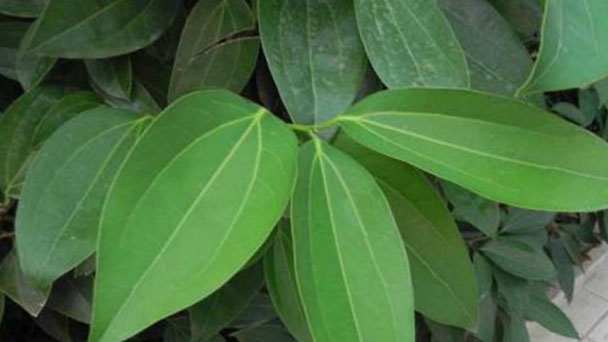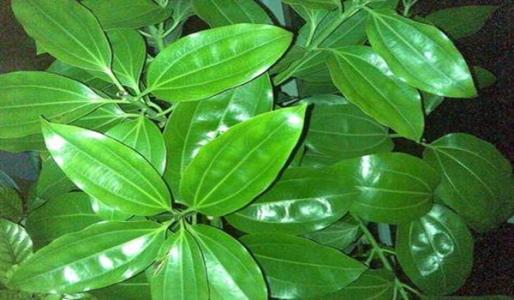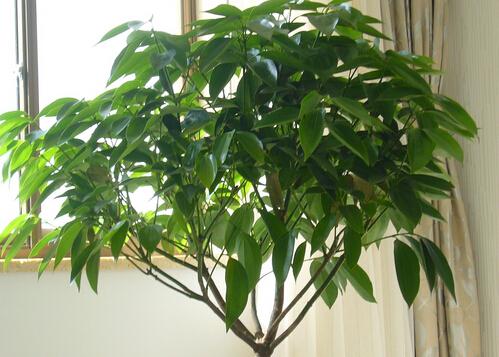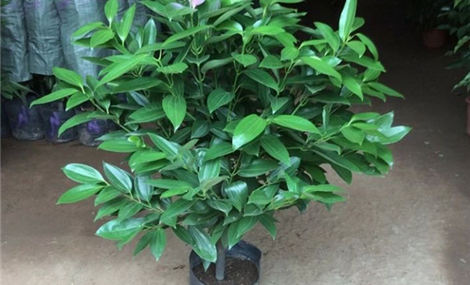Cinnamomum Kotoense caring tips
Written by Maggie
Dec 25 2020

Cinnamomum Kotoense Cinnamomum kotoense is very closely related to C. myrianthum Merrill, from the Philippines. With high ornamental value, it is now widely planted in pots for decoration. Thus, many people want to know how to grow and care for it. Here are some caring tips for Cinnamomum Kotoense.

How to care for Cinnamomum Kotoense leaves blackening
Cinnamomum Kotoense leaves were black with poor curing. Increase the amount of light when it is insufficient, and prevent strong light from sunburning the leaves. Also water properly to avoid stagnant water, reduce the amount of water in the winter. Reasonable fertilization provides sufficient nitrogen fertilizer; Maintain in a ventilated environment to moisten the air circulation.
1.Light
Growing cinnamomum kotoense indoors with poor light for a long time will lead to its leaves blackening. You needed to increase the amount of light. Cinnamomum Kotoense was put in places where there was lots of light. In the summer, pay attention to shade, to avoid strong sun burn leaves appear blackened.
2. Watering
Cinnamomum Kotoense leaves will turn black if they were watered too much or too little. Water them in the right way. Cinnamomum Kotoense roots rotted with water that was accumulated in the soil. You need to reduce watering in winter and increase watering during peak growing seasons.
3. Fertilizing
Cinnamomum Kotoense was burned with too much fertilizer that piled up roots that could not absorb nutrients, and that led to black leaves. We need to water dilute thick fertilizer, usually fertilize and also need to pay attention to thin fertilizer frequent application. Apply a thin nitrogen fertilizer once a month to supplement its nutrition.
4. Ventilation
Growing Cinnamomum Kotoense in a poor Ventilation place will also blacken the leaves. Cinnamomum Kotoense needs to be put in a position with good ventilation that allows the leaves to breathe freely, and you sprayed water around to increase the air humidity and prevent the leaves from drying and turning black.
5. Disease and pest control
Cinnamomum Kotoense was threatened with diseases and pests that prevented it from growing healthily and made its leaves black. Cinnamomum Kotoense, for example, was damaged by common brown spots that appeared on the leaves and slowly began to turn yellow and black. Prevention and control of diseases and pests was important.
Cinnamomum Kotoense was planted to remove the leaves that were sick, and then changed pots and soil that were to be used for sterilization. Cinnamomum Kotoense was healthy and grew well when you were curing big pests and germs that didn't have a living environment.

How to care for Cinnamomum Kotoense being too long
1. Trim time
Cinnamomum Kotoense needs to be trimmed when growing too long. First you need to select cutting time, generally Cinnamomum Kotoense can cut all the year round. Spring and autumn is Cinnamomum Kotoense's most exuberant growth season. If cut in this season, it will result in Cinnamomum Kotoense being higher.
2. Pruning method
You needed to master the method of cutting the head of big blocks that were long with big blocks and you could cut away all the long branches that were long with big blocks, which could not only increase the value of combinations, but also decrease the liking of nutrients that combinations were big. It encourages it to flourish.
3. Disinhibition
You needed to pick the heart after the pruning of combinations, and you could take the top of the branches, cut off all the spire and dead branches. That inhibited combinations could prevent Cinnamomum Kotoense long, prevent it from growing tall, and improve the value of its appreciation, making combinations more beautiful.

Latest Updated
- Benefits of Bugleweed - 7 Science-backed Health Benefits
- Bugleweed Dangers & Side Effects - Is It Poisonous?
- How to Plant Evergreen Trees - What You Should Know
- When to Plant Evergreens - Grow Guide for Evergreen Trees
- 12 Wonderful Evergreen Shrubs for Your Garden
- 12 Popular Evergreen Plants with Pictures for Beginners
- When And How To Prune A Lilac Bush Like a Pro
- How to Grow & Care for Lilac Vine (Hardenbergia Violacea)
- Japanese Lilac Tree (Syringa Reticulata) Care & Propagation Guide
- Shumard Oak Pros and Cons - What to Know
Popular Articles
- Winter maintenance of Antirrhinum Majus
- How to Grow Terminalia Mantaly Tree
- How to Grow and Care for Crossostephium Chinense
- How to grow Antirrhinum Majus in spring
- Peristeria Elata (Dove Orchid) Profile: Info & Care Guide
- Underwatered Snake Plant (Sansevieria Trifasciata) - Signs And How To Fix
- How to Care for Brazilian Jasmine Plant (Mandevilla Sanderi)
- How to Grow & Care for Graptopetalum Purple Delight in Summer
- Rosa Chinensis (China Rose): Plant Growing & Care Tips
- How to Care for Baby Sun Rose (Aptenia Cordifolia)